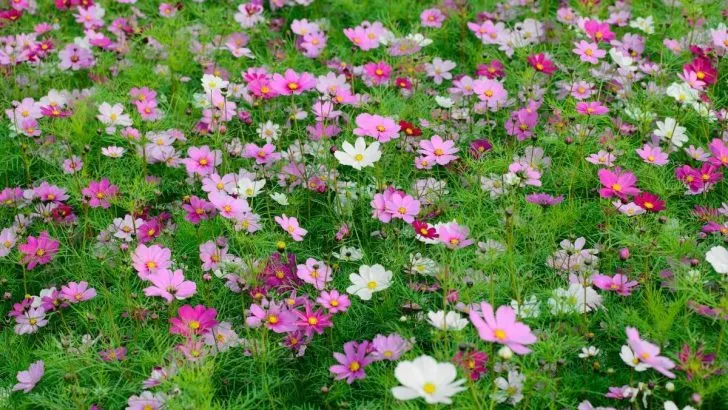Are you dreaming of a garden that practically takes care of itself?
Imagine stepping into your backyard each spring to find it bursting with life, without lifting a finger. Well, it’s not just a gardener’s daydream—it’s entirely possible with self-seeding plants!
Self-seeding plants are like the gift that keeps on giving. Once you plant them, they return year after year, scattering their seeds and renewing themselves without any fuss.
They’re the ultimate time-savers for busy gardeners and a delightful surprise when they pop up in unexpected places.
In this guide, we’ll explore 16 fantastic self-seeding flowers and edibles that will turn your garden into a perpetual paradise.
So, grab your gardening gloves (or don’t, since these plants do the work for you), and let’s dive in!
1. Morning Glory (Ipomoea spp.)
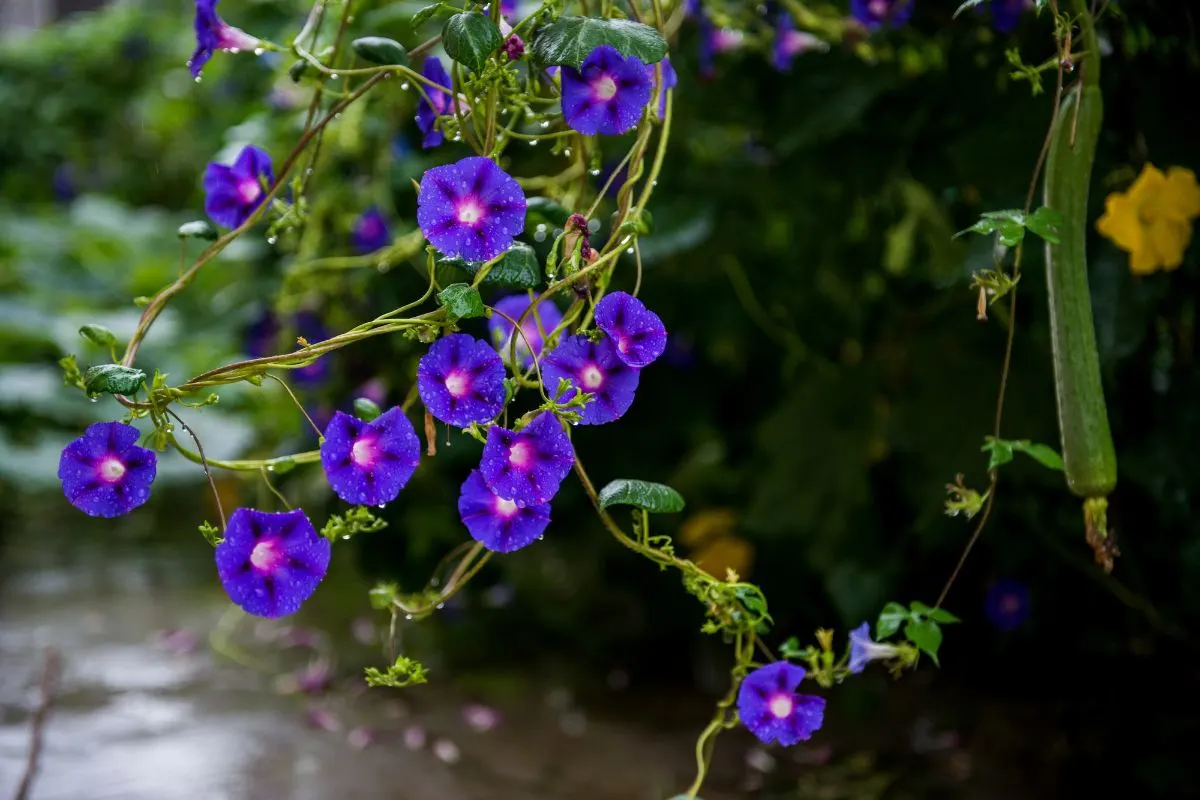
If you’ve ever watched a morning glory unfurl its petals with the rising sun, you know why it’s a favorite among gardeners. With heart-shaped leaves and climbing vines that can reach up to 15 feet in a single season, this plant is the overachiever of the garden world!
Morning glories produce vibrant, trumpet-shaped flowers in hues of purple, pink, blue, red, or white. While they’re annuals that die back with winter’s chill, they self-sow so enthusiastically that you’ll feel like they’ve become permanent residents in your garden.
But a word to the wise: these beauties can be a bit like that charming friend who overstays their welcome. They love to spread and may cling to nearby supports—or even neighboring plants. Keep an eye on them, and don’t be shy about pulling up seedlings that wander too far from where you want them.
2. Calendula (Calendula officinalis)
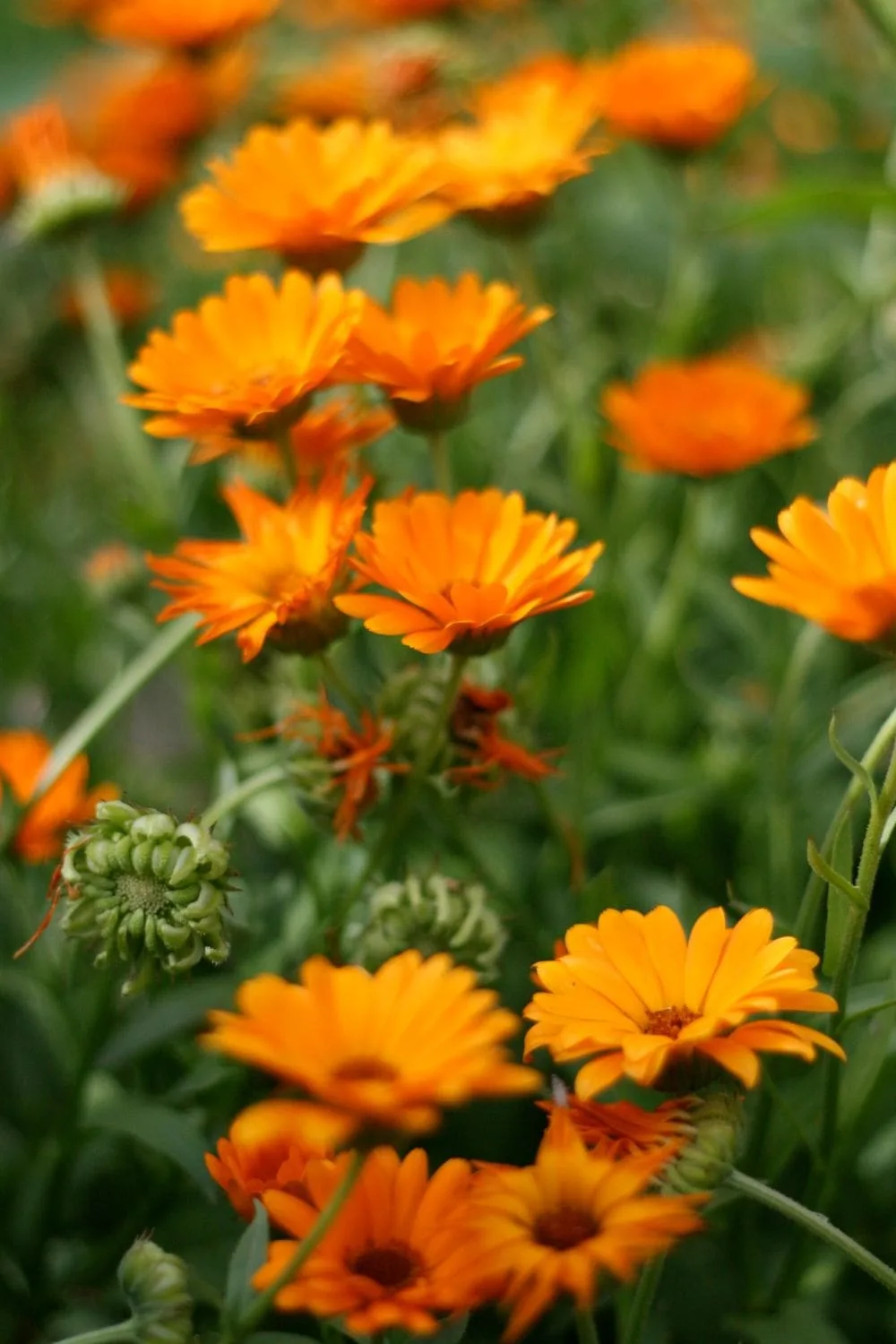
Meet the calendula, also known as pot marigold—the gardener’s trusty sidekick. Not only does it brighten up your garden with its cheerful golden, daisy-like flowers, but it’s also a powerhouse companion plant.
Calendula plays well with tomatoes, carrots, cucumbers, asparagus, peas, lettuce—you name it! It’s a magnet for pollinators like bees and butterflies, and it rolls out the welcome mat for beneficial insects such as ladybugs and lacewings, who are happy to dine on garden pests like aphids.
Plus, its fragrant leaves are a natural mosquito repellent and can deter asparagus beetles. Let calendula self-seed, and it will reward you by returning season after season, making your gardening life just a bit easier.
3. Field Poppy (Papaver rhoeas)
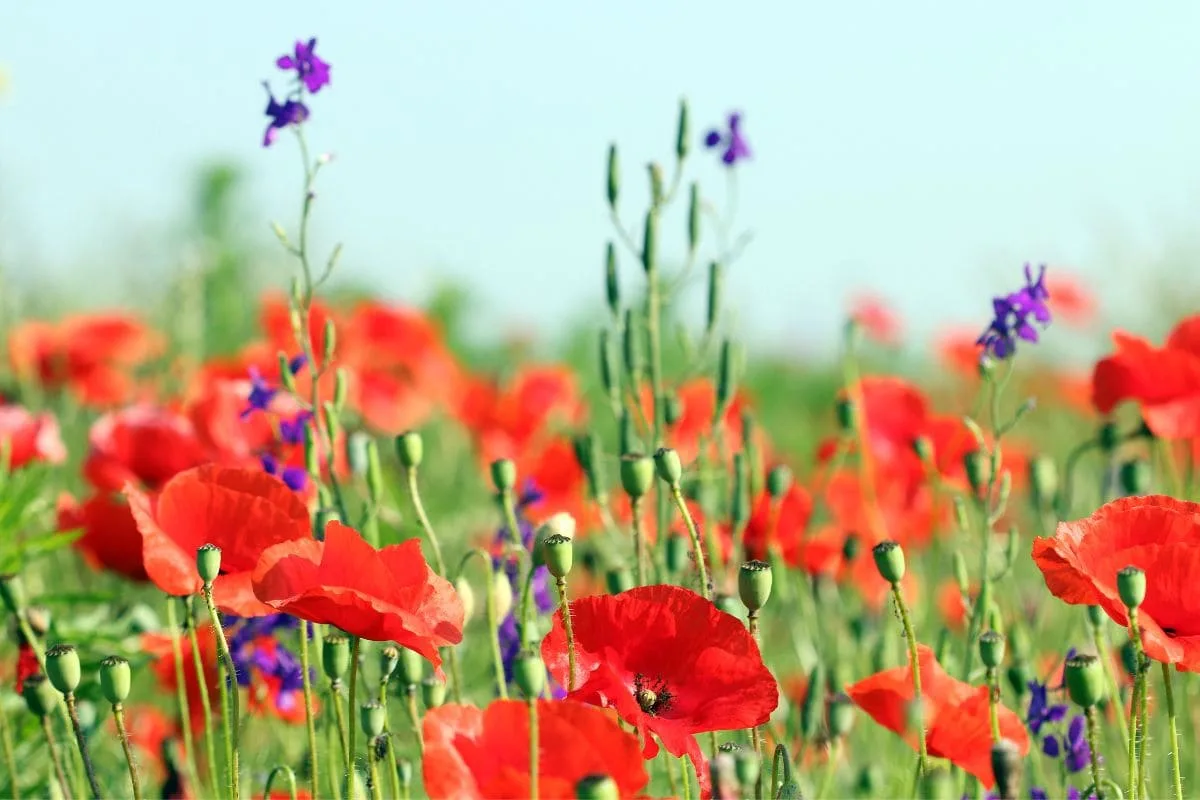
Ever heard the saying, “Bloom where you’re planted”? The field poppy takes that to heart. Immortalized in the World War I poem In Flanders Fields, this resilient flower can thrive in the toughest conditions.
With delicate, papery petals and a striking black center, the field poppy typically displays a vivid scarlet color, though you might also spot shades of purple or white. Standing at 9 to 18 inches tall, it doesn’t mind poor soil and can handle being a little neglected.
After its stunning early summer display, the poppy forms seed capsules that, when ripe, burst open, scattering tiny black seeds. These seeds are so hardy that they’ll sprout wherever they land, especially in disturbed soil. Before you know it, you’ll have a sea of red waving gently in the breeze.
4. Cosmos (Cosmos bipinnatus)

If you’re looking for a flower that puts on a show all season long, cosmos is your go-to. From June until the first frost, these vibrant blooms will keep your garden lively and colorful.
Growing up to 4 feet tall, cosmos plants have delicate, feathery foliage that gives them a whimsical appearance. Their flowers, with eight petals surrounding a sunny yellow center, come in shades of pink, purple, and white. Some varieties even boast streaks or rims of contrasting colors, adding to their charm.
While deadheading can encourage even more blooms, leaving some flowers to go to seed ensures that cosmos will self-sow and return next year. It’s a win-win—you get prolonged blooming now and a head start on next season’s garden.
5. Sweet Alyssum (Lobularia maritima)
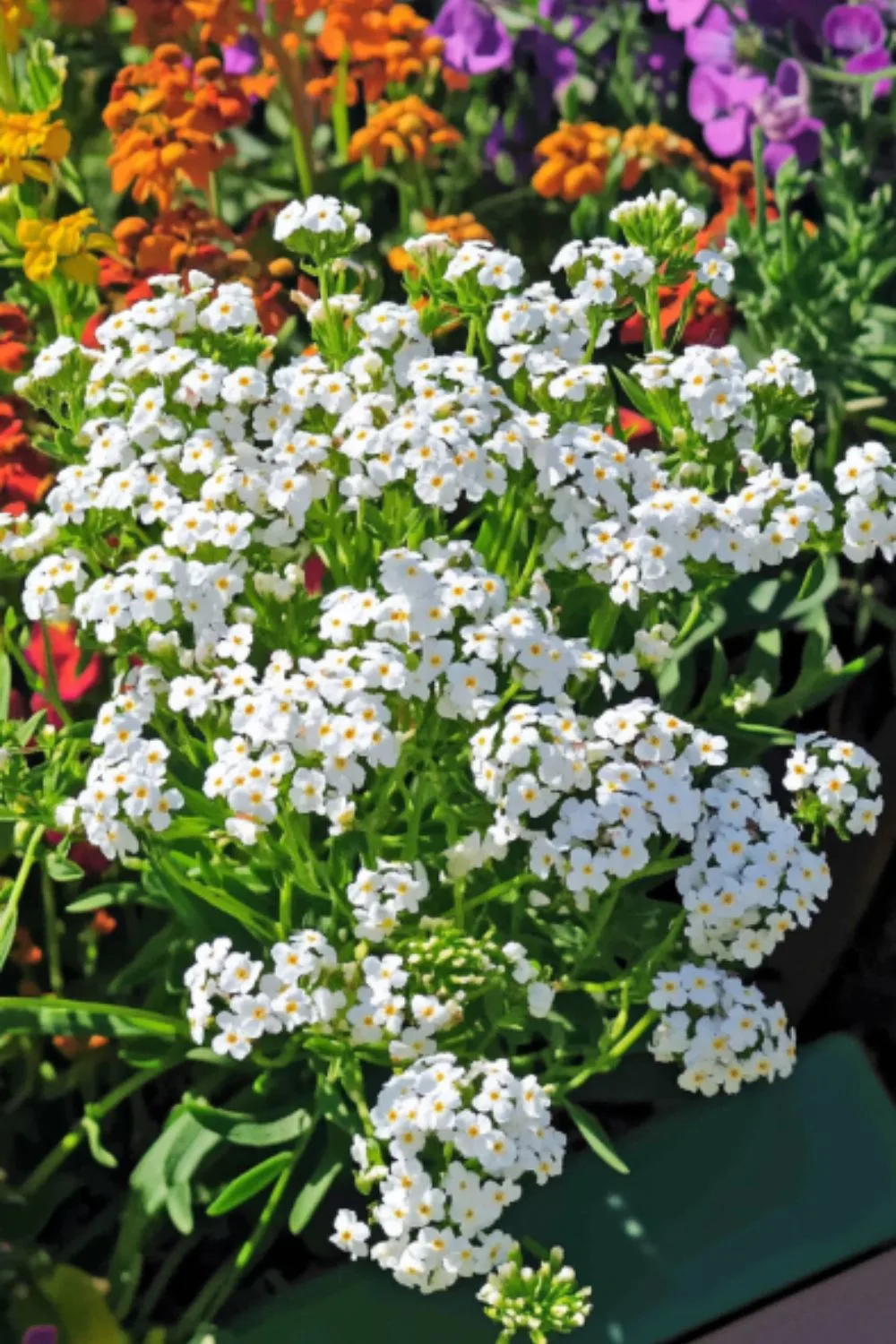
Picture a carpet of tiny, sweet-scented flowers covering the ground—that’s sweet alyssum for you. This low-growing plant is perfect for filling in gaps along borders, underplantings, and edging paths.
Sweet alyssum produces clusters of honey-scented blossoms in white, pink, yellow, or purple. When in full bloom, the flowers are so abundant they can completely hide the foliage beneath. It’s like nature’s own ground cover, adding both beauty and fragrance to your garden.
One of the best things about sweet alyssum is its prolific self-seeding habit. Each seed pod contains two seeds, and with its generous blooming, the plant can easily double its numbers year after year. Just plant it once, and let sweet alyssum take care of the rest.
6. Love-in-a-Mist (Nigella damascena)
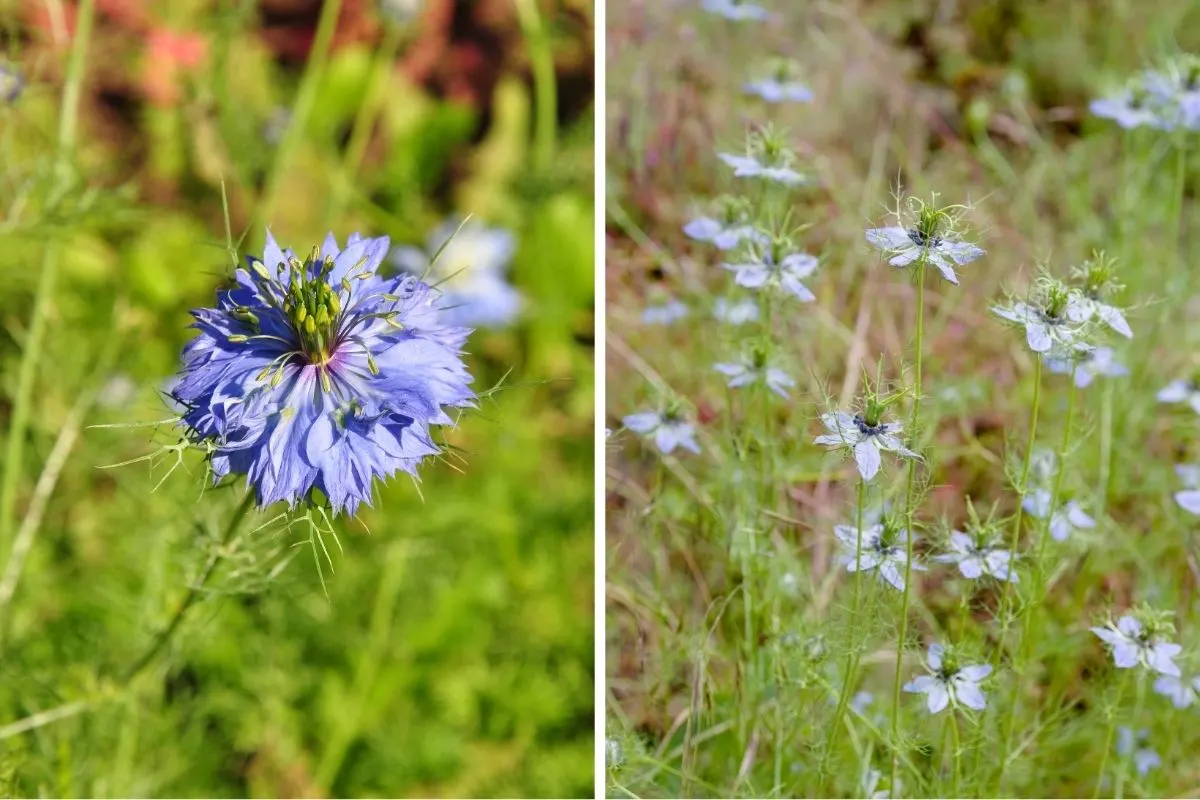
With a name as enchanting as love-in-a-mist, it’s no surprise this plant adds a touch of magic to any garden. Its delicate, thread-like foliage creates a misty backdrop for the singular, star-shaped flowers that seem to float above the leaves.
Blooming from June to August, love-in-a-mist flowers come primarily in shades of blue, but you might also find varieties in lavender, pink, or white. Each bloom features up to 25 sepals arranged around a cluster of stamens, creating a complex and intriguing appearance.
After flowering, the plant develops unique seed pods—large, egg-shaped capsules with twisted “horns” and a bristled base. These pods add visual interest and, when left on the plant, release seeds that will bring a new generation of love-in-a-mist to your garden next year.
7. Giant Larkspur (Consolida ajacis)

If you’re aiming for drama and height in your flower beds, look no further than the giant larkspur. This impressive annual can reach up to 4 feet tall, with towering spikes covered in striking blooms.
The flowers, each about 2 inches across, resemble irises with their intricate arrangement of sepals and petals. Colors range from rich blues to soft pinks and pristine whites, offering plenty of options to complement your garden palette.
Giant larkspur blooms heavily over a two-month period, and when the flowers fade, they give way to seed pods filled with tiny black seeds. Allow these to mature and disperse, and you’ll find larkspur popping up again next season, ready to bring vertical interest and vibrant color back to your garden.
8. Honeywort (Cerinthe major ‘Purpurascens’)
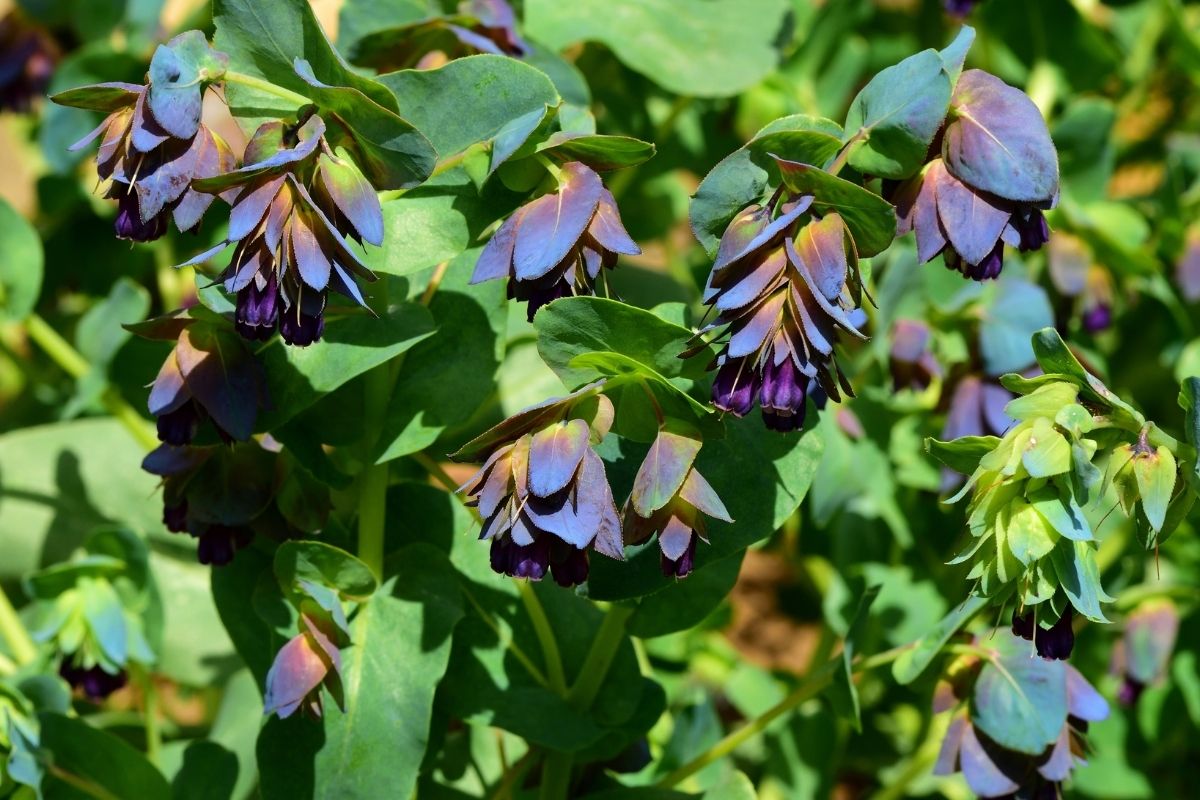
As the name suggests, honeywort is a favorite among bees and hummingbirds, thanks to its nectar-rich flowers. But this plant isn’t just for the pollinators—it’s a visual treat for gardeners too.
Honeywort features fleshy, oval leaves with a blue-green hue, topped by clusters of dangling, tubular flowers in deep purple. Surrounding each floral cluster are colorful bracts that intensify to a bright blue as the nights grow cooler, adding an ever-changing display to your garden.
Come autumn, honeywort produces large black seeds that readily fall to the ground. With minimal effort on your part, this plant will happily self-seed, ensuring that its captivating blooms return year after year.
9. Garden Angelica (Angelica archangelica)
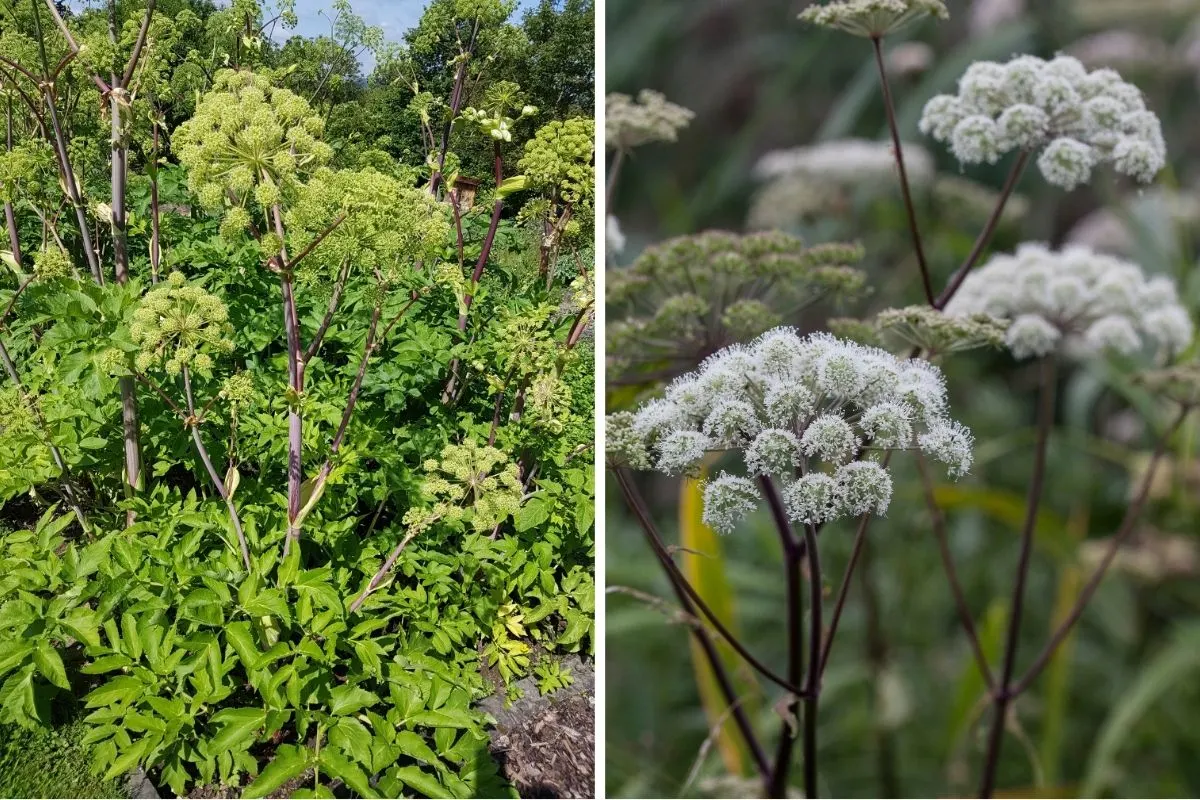
Adding structure and a touch of the exotic, garden angelica is a biennial that brings interesting textures and shapes to your flower beds. In its second year, it sends up tall, multi-branched stems topped with large, spherical umbels.
These umbels, composed of tiny green-white flowers, form impressive orbs about 6 inches in diameter. At a height of up to 6 feet, garden angelica makes a bold statement and serves as a dramatic backdrop for shorter plants.
After flowering and setting seed, the plant will die back, but not before leaving behind a bounty of seeds to continue its legacy. Give it plenty of space, and garden angelica will reward you by returning and adding architectural interest to your garden in the seasons to come.
10. Common Blue Violet (Viola sororia)
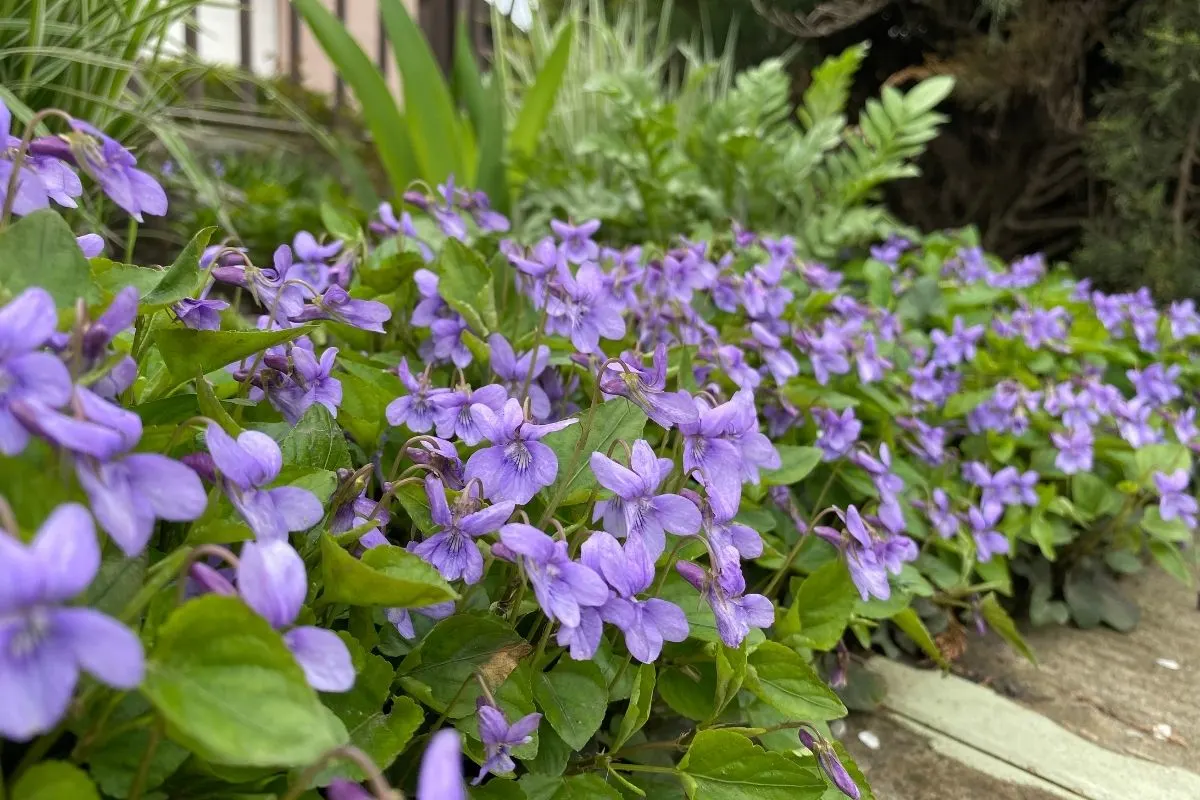
A native wildflower of eastern North America, the common blue violet brings a touch of woodland charm to your garden. This low-growing perennial forms a basal rosette of heart-shaped leaves, with blooms that emerge directly from underground rhizomes.
In late spring, the plant produces delicate, five-petaled flowers about an inch across. The blossoms are typically a medium to dark violet with a white throat, adding subtle beauty to shady spots in your garden.
Alongside these showy flowers, the common blue violet also generates hidden, self-pollinating blooms called cleistogamous flowers. These produce seeds that are mechanically ejected from the plant in late summer, ensuring that new violets will pop up the following year.
11. Parsley (Petroselinum crispum)

Think you have to plant parsley every spring? Think again! By embracing its biennial nature, you can cultivate a self-sustaining parsley patch that keeps on giving.
In its first year, parsley focuses on growing those flavorful leaves we love to add to our dishes. Harvest as usual during this time. When its second year rolls around, let the plant flower and set seeds. The original plant will eventually die back, but not before dropping seeds that will sprout into new parsley plants.
With minimal effort, you’ll have fresh parsley year after year, making it one less herb to worry about during your spring planting frenzy.
12. Dill (Anethum graveolens)
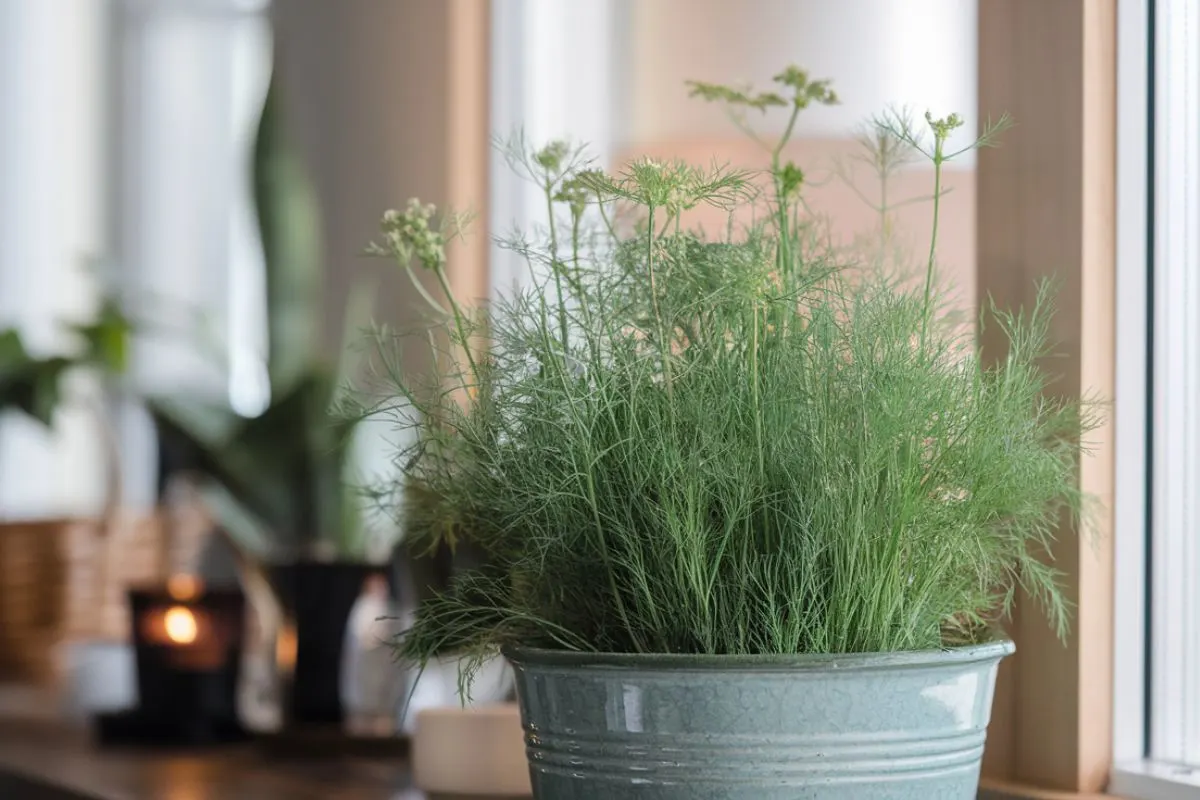
Fragrant and feathery, dill is both an edible herb and a charming ornamental plant. Its delicate foliage adds texture to your garden, and when it blooms, dill showcases large, flattened umbels of bright yellow flowers.
These blossoms are a beacon for pollinators like bees and butterflies, as well as beneficial insects such as hoverflies and parasitic wasps. After flowering, dill produces an abundance of seeds that readily fall to the soil below.
By allowing dill to self-seed, you’ll enjoy a continuous supply of this aromatic herb. Plus, its tendency to pop up in unexpected places can add a whimsical touch to your garden layout.
13. Arugula (Eruca vesicaria)
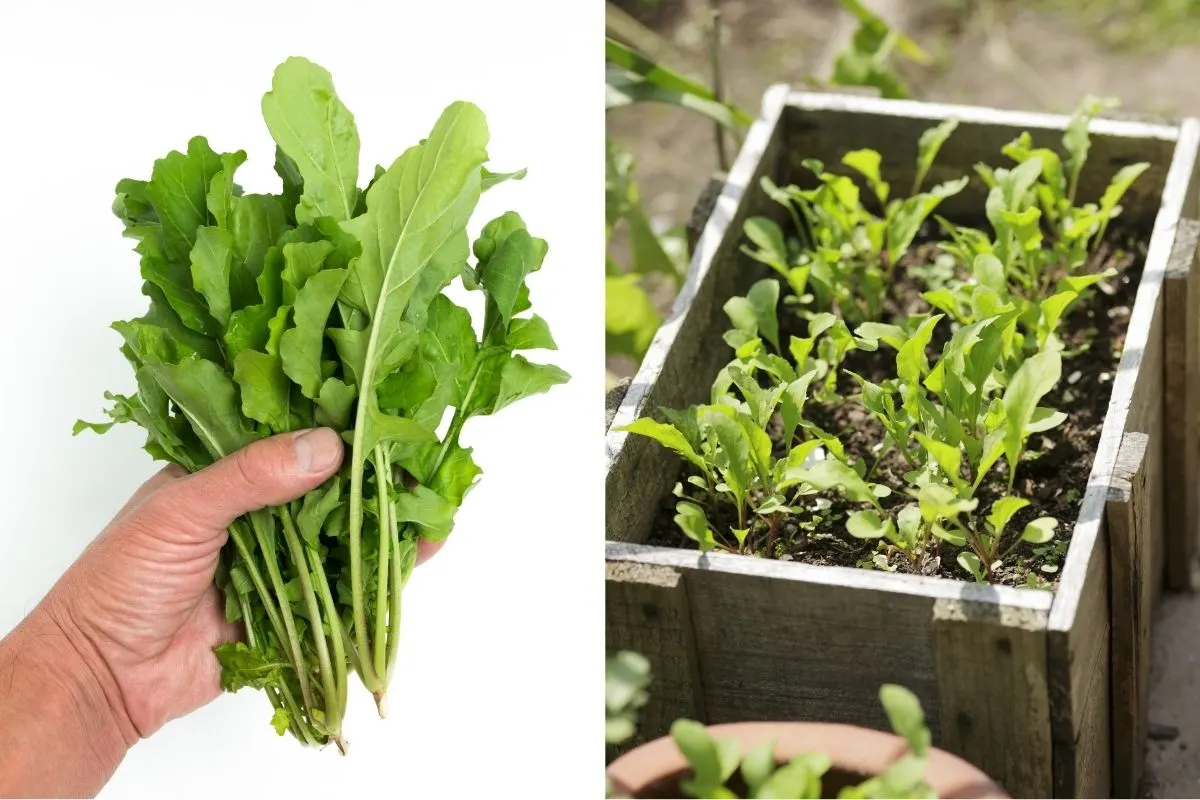
For a peppery kick in your salads, arugula (also known as rocket) is a must-grow green. This annual plant thrives in cool weather, producing tender leaves with a spicy flavor that’s hard to beat.
As temperatures rise, arugula has a tendency to bolt, sending up flowers and eventually setting seed. While this signals the end of your leafy harvest, it’s the beginning of the next generation. Allow the plants to flower and seed, and you’ll find new arugula plants emerging when the weather cools down again.
It’s like nature’s own method of succession planting—no packet of seeds required!
14. Carrot (Daucus carota subsp. sativus)

Did you know that carrots are biennials? While we typically harvest them for their crunchy roots in the first year, leaving a few in the ground can yield surprising results.
Overwintered carrots will survive the cold, and in their second year, they’ll send up tall stalks topped with lacy, white umbel flowers that resemble their wild cousin, Queen Anne’s lace. These pretty blooms not only add visual interest but also attract beneficial insects.
After flowering, the plants produce seeds that will disperse and germinate the next season. By letting nature take its course, you can establish a self-seeding carrot patch with minimal effort.
15. Lettuce (Lactuca sativa)
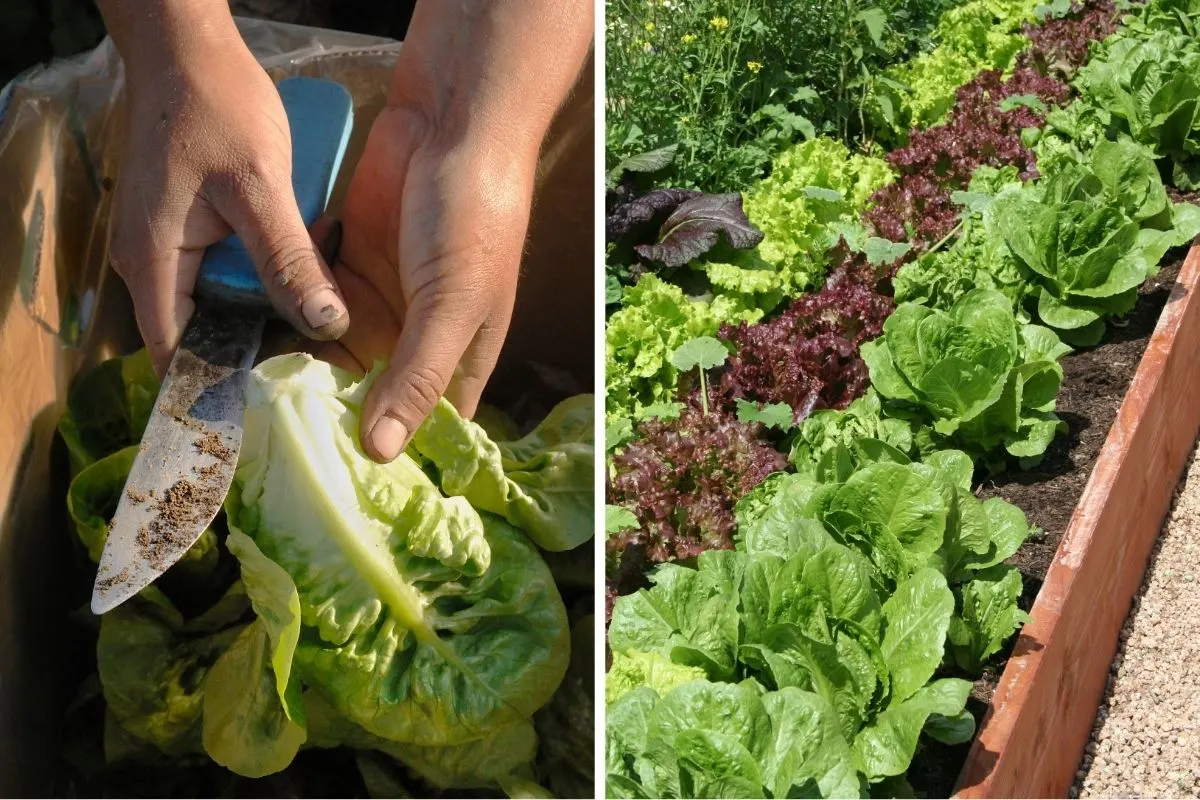
There’s nothing quite like fresh lettuce from the garden, and with self-seeding varieties, you can enjoy it without replanting every year. When you harvest lettuce leaves selectively, the plant continues to grow and produce.
However, as the weather heats up, lettuce tends to bolt, sending up a flowering stalk. While this often signals the end of the tasty leaves, allowing the plant to flower and set seed means you’ll have new lettuce seedlings popping up when conditions are favorable again.
It’s a serendipitous way to keep your salad bowl filled, and you might even discover new varieties that cross-pollinate and develop unique traits.
16. Cilantro (Coriandrum sativum)
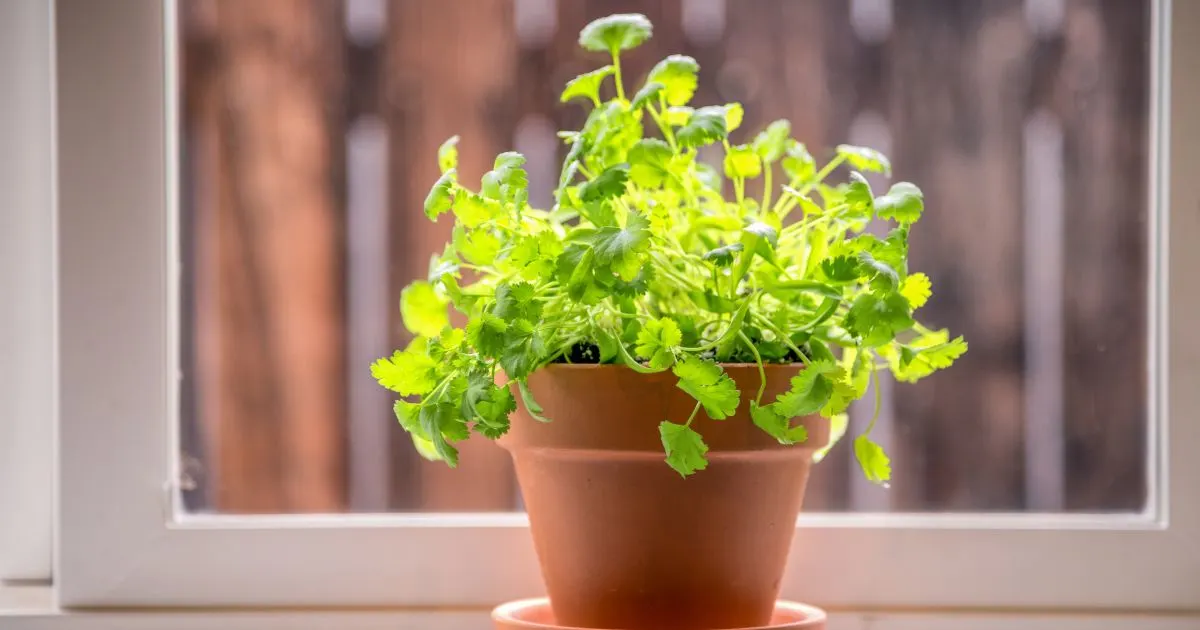
Cilantro is a beloved herb in many cuisines, but it has a reputation for being a bit fleeting in the garden. It prefers cooler temperatures and has a tendency to bolt as soon as summer arrives.
Instead of fighting nature, let some of your cilantro plants flower and set seed. The delicate white flowers are attractive to pollinators, and the seeds that develop—known as coriander—are a spice in their own right.
When the seeds fall to the ground, they’ll wait until conditions are just right to germinate, often leading to a second cilantro crop in the same season. It’s a win-win for both your herb garden and your spice rack!

